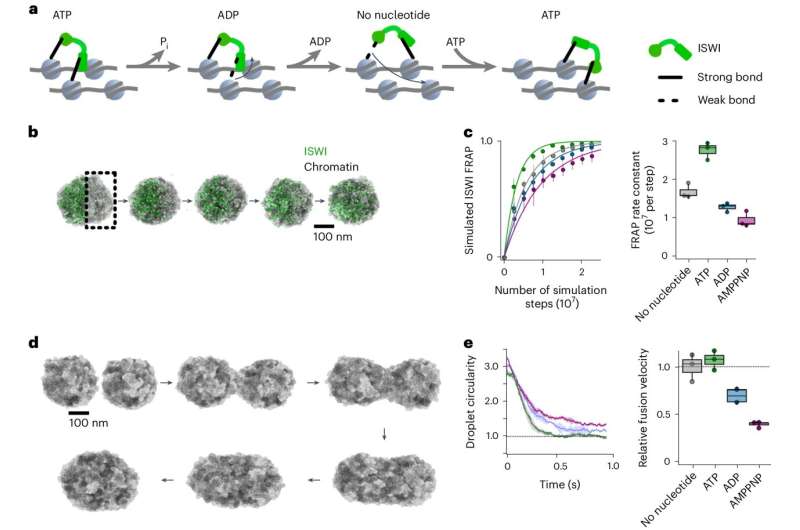This article has been reviewed according to Science X's editorial process and policies. Editors have highlighted the following attributes while ensuring the content's credibility:
fact-checked
peer-reviewed publication
trusted source
proofread
Researchers decipher how an enzyme modifies the genetic material in the cell nucleus

Inside the cell nucleus, the DNA molecule is found in a densely packed DNA-protein complex known as chromatin. Here the DNA is wrapped around a core of histone proteins and densely packed to form nucleosomes. The structure of the nucleosomes determines which genes are accessible and active and therefore plays an important role in gene regulation. To respond to metabolic signals, changed environmental conditions, and developmental processes, the nucleosomes must undergo repeated dynamic modifications with the aid of enzymes.
A team led by Professor Johannes Stigler from LMU's Gene Center Munich in collaboration with Felix Müller-Planitz (TU Dresden) has now carried out studies to investigate how a tiny chromatin modifying enzyme called ISWI remains mobile despite the densely packed material in the cell nucleus and is able to effectively rearrange nucleosomes.
The work is published in the journal Nature Structural & Molecular Biology.
The researchers were able to show that the enzyme consumes ATP—the energy currency of the cell—not only for its enzymatic activity, but also to navigate through the cell nucleus and to prevent the chromatin from becoming too rigid.
"The movement of ISWI through the space densely packed with chromatin is powered by ATP. As it progresses, it keeps docking alternately with different binding sites on the nucleosomes. We compare this movement with that of a monkey swinging from branch to branch," says Stigler.
According to the researchers, the deciphering of these processes could yield insights into how defects contribute to diseases and could even open up new therapeutic avenues.
More information: Petra Vizjak et al, ISWI catalyzes nucleosome sliding in condensed nucleosome arrays, Nature Structural & Molecular Biology (2024). DOI: 10.1038/s41594-024-01290-x
Journal information: Nature Structural & Molecular Biology
Provided by Ludwig Maximilian University of Munich





















